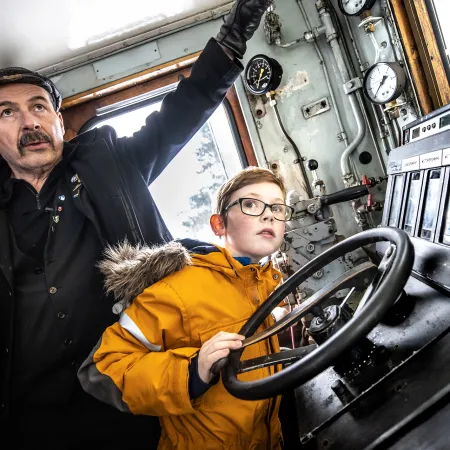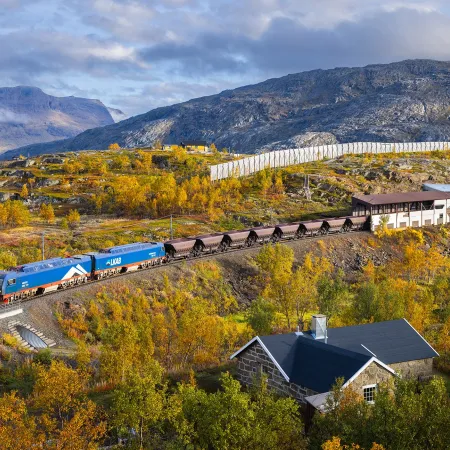Trains of Narvik
Just a short walk from the city center, you’ll find a unique opportunity to explore a variety of iconic locomotives that tell the story of this historic town’s connection to the rails. Whether you’re interested in history, engineering, or simply want to enjoy a one-of-a-kind experience, Narvik’s trains have something special to offer.
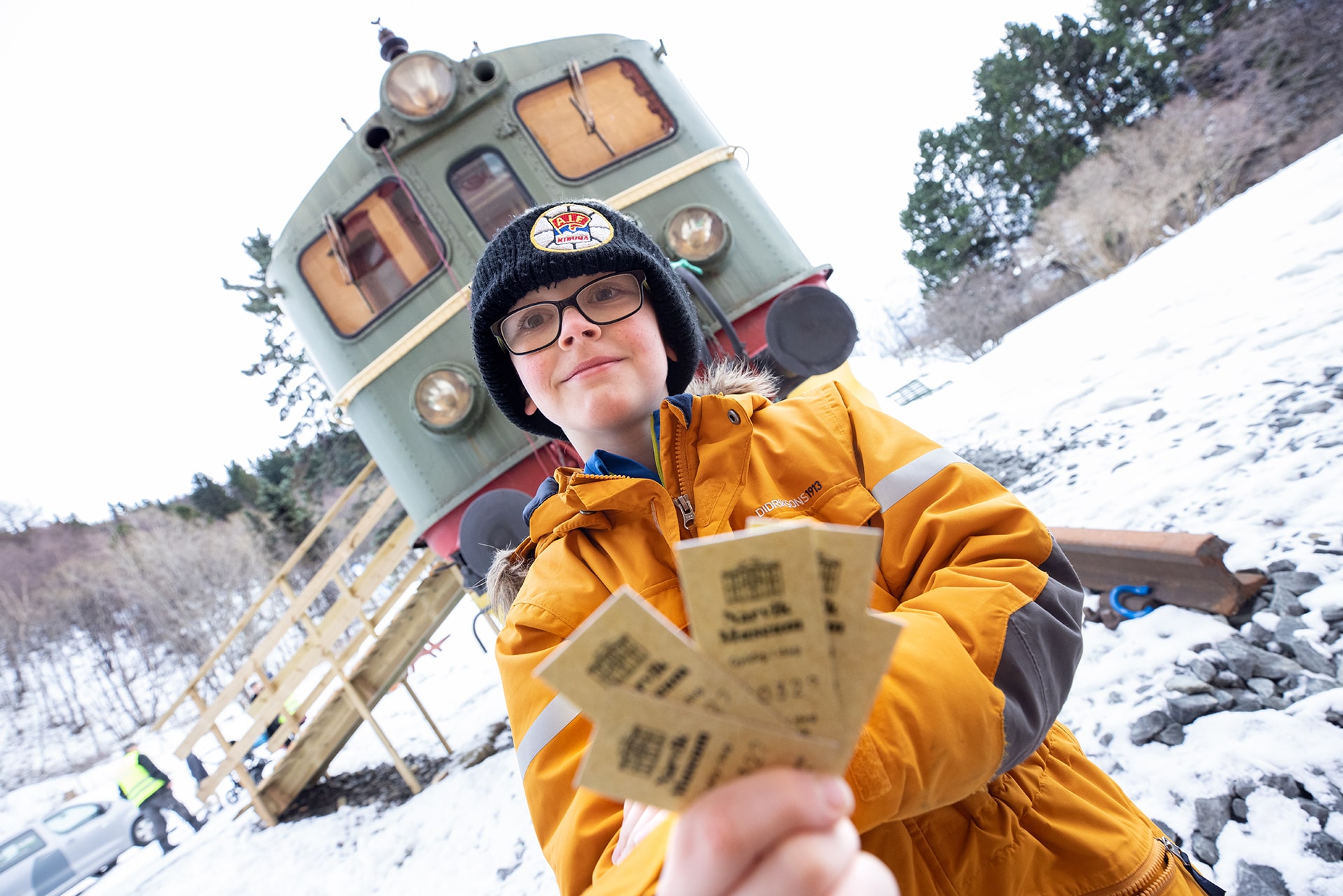
A vintage El-12 locomotive, built in 1954, rests gracefully on the railway tracks outside the Narvik Museum.
Michael Ulriksen
NSB Narvik Electric Locomotive Type El 12
Outside the Narvik Museum, the El-12 locomotive takes pride of place, serving as a tangible link to the glory days of the Ofoten Railway. Built to endure the harsh Arctic conditions, this electric locomotive played a crucial role in transporting iron ore across one of Norway’s most scenic railway routes. Visitors can climb aboard and explore every corner of this magnificent machine, from the driver’s cabin to the intricate control panels. It’s a hands-on experience that brings railway history to life. The museum itself offers a wealth of exhibitions that delve deeper into the region’s railway heritage, making it a must-visit for train lovers. Here’s a Google Maps link to help you find the location of the locomotive.
Increasing ore production made it necessary several times to expand the capacity of the Ofoten Line. In 1950/51, LKAB announced that ore transport would increase from 9 million tons to 15 million tons. The weight of the trains was thus increased to approximately 3100 tons. SJ (Swedish Railways) and NSB (Norwegian State Railways) had to acquire locomotives capable of pulling such heavy loads. Three new double locomotives of type El 12 were ordered. These were of the same type that SJ had developed for ore trains, known as Dm.
The new El 12s, numbered 2113/2114, 2115/2116, and 2117/2118, arrived in Narvik between February and May 1954. The locomotives were built by Motala for the mechanical components and ASEA for the electrical components. NOHAB also contributed to the delivery of the last two El 12 locomotives, numbered 2119/2120, which arrived in 1957.
In 1957, the axle load on locomotives 2113/2114 was experimentally increased from 17 to 19 tons by adding ballast. This ballasting was later applied to all the other El 12 locomotives. All El 12s were converted into three-section locomotives during the period of 1967-1968. After the conversion, the three-section locomotives were capable of pulling approximately 5000 tons on a 10‰ incline, such as the steep slope at Kopparåsen on the Swedish side.
On May 16, 1989, El 12 made its final ore train journey. El 12 numbers 2119 and 2120 are now formally owned by the Ofoten Museum, while the Malmbanens Venner (Friends of the Ore Railway) are responsible for their maintenance.
- Total weight: 190 tons
- Speed: 75 km/h
- Adhesion weight: 160 tons
- Total length: 25,100 mm
- Motors: 2x1250 hp
- Axle arrangement: 1'D+D1'
- Wheel diameter: 1530 mm
- Transformers: 2x1840 kVA
- Max train weight: 3600 tons
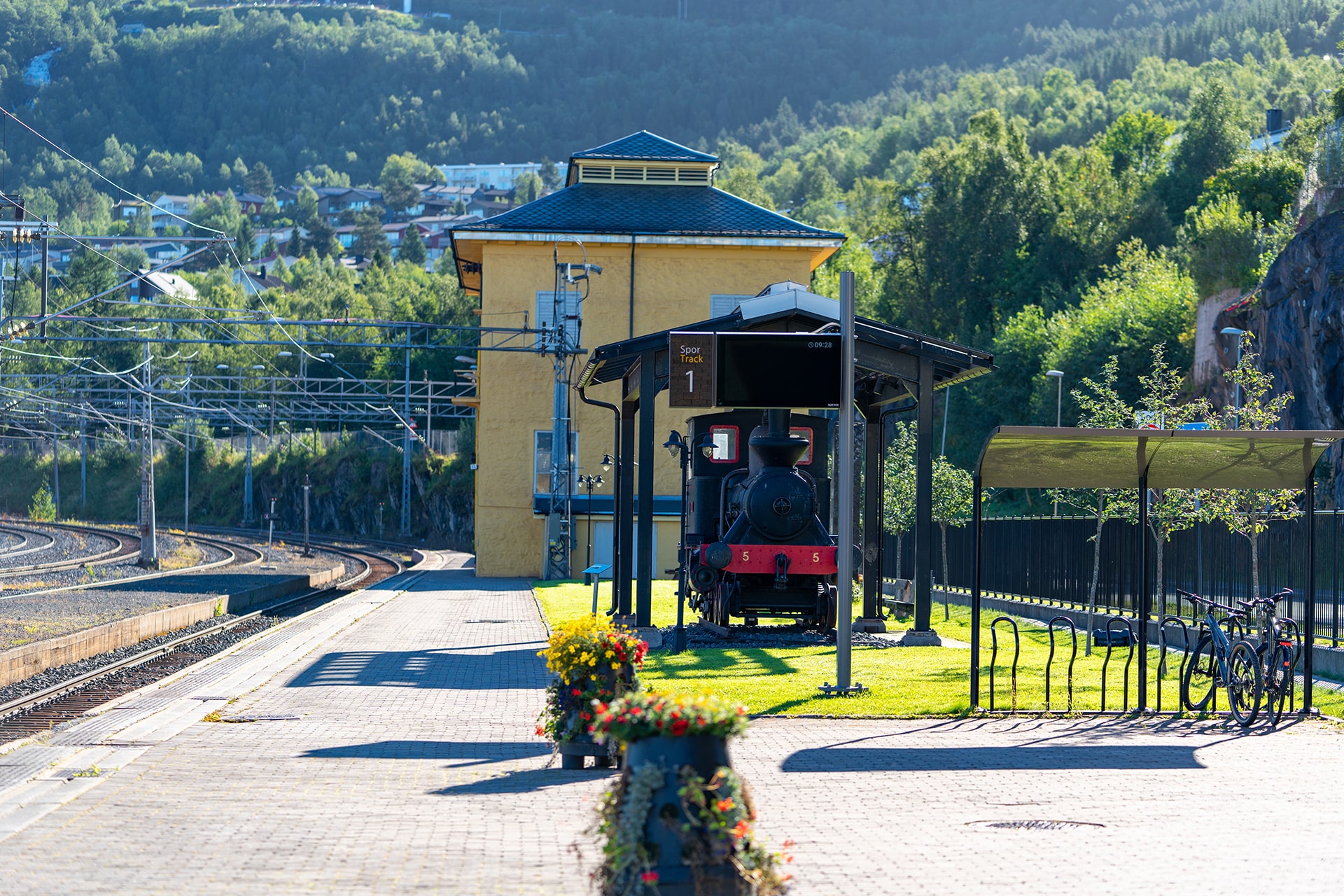
Bifrost, Narvik's pioneering steam locomotive, symbolizes the city's industrial legacy.
Babang Deshommes
LKAB Narvik Steam Locomotive Bifrost No. 5
Step back in time as you admire Bifrost, a steam locomotive that dates back to 1882. This remarkable engine, on display near Narvik’s train station, holds a special place in history as the first steam locomotive used in construction traffic for LKAB’s facilities in the area. Its sturdy design and classic appearance offer a glimpse into the pioneering days of railway construction. Standing beside Bifrost, you can almost hear the echoes of the past: a testament to the ingenuity and resilience of the engineers who helped shape Narvik’s future. Here’s a Google Maps link to help you find the location of the locomotive.
Bifrost No. 5 is a four-coupled locomotive with the axle configuration of 2'+B. It featured "cut-off control," according to engineer K. Edvardsen. This control system does not have a curve setting but rather a straight ruler. The bogie is of the Foyers type, a visible bogie. It was built in 1882 by Nydquist & Holm (NOHAB) in Trollhättan, with the construction number 161.
The locomotive was delivered as number 1 in a series of seven to the Här-Härby Railway (HhyJ) in Skåne, known as the Gärds locomotives. The name comes from the first locomotive in the series, called Gårds, which was delivered in 1881 to Gärds Härads Ångsporväg. The second locomotive in the series was named Bifrost, and it was the first locomotive to have a spark arrestor. Bifrost was later purchased by Frävi-Ludvika Railway (FLJ) and received FLJ number 2 there.
Correspondence between LKAB's CEO Arvid Lidman (who later became the Swedish Prime Minister) and Ole W. Lund at LKAB in Narvik indicates that the locomotive was repaired at Tollarps Mek. Verkstad in Skåne and was ready for dispatch on August 11, 1900. It is therefore assumed that it arrived in Narvik by boat in late autumn 1900 or early 1901. Raymond Hedman has a theory about why it received LKAB number 5. Initially, it was not intended to keep the locomotive after the ore quay was completed, so it was not given an LKAB number. However, when ore transport began, there was a need for Bifrost due to the increasing construction activities at LKAB. By then, locomotives 1-4 had already been assigned LKAB numbers, making it natural to name Bifrost number 5. This theory seems very plausible.
At LKAB, the locomotive was used for light shunting and was removed from the inventory list in 1941, although it continued to be used afterward. The last task the locomotive had before it was placed at Narvik station as "decoration" was as a water heater during the construction of LKAB's office in Narvik.
Manager K. Dahlum gave Bifrost to the Narvik Travel Traffic Association to be placed in a future railway museum in Narvik. However, this museum did not materialize. Traffic inspector E. Stokland from NSB (part of the Travel Traffic Association) had NSB restore it and place it at Narvik station. Later, in the 1980s, the Ofoten Museum was established with a special interest in the railway era and Narvik's railway history. Therefore, the "logical owner" of Bifrost is now the museum, but as long as the Railway Directorate takes good care of it, there is likely no reason to dispute ownership. Few in Narvik are aware of the gem that Bifrost truly is, being the only remaining locomotive from the Gärds series.
Bifrost was restored again in the summer of 1998 by Malmbanens Venner in Narvik and participated in Harstad in June as part of Narvik's celebration during the 1998 Festival.
- Total weight: 21 tons
- Total length: 7200 mm
- Wheel diameter: 868 mm
- Speed: 30 km/h
- Cylinder diameter: 310 mm
- Stroke length: 445 mm
- Water tank: 1.5 tons
- Coal bunker: 0.8 tons
- Heating surface: 42.3 m²
- Grate surface: 0.7 m²
- Working pressure: 10 kg/cm²
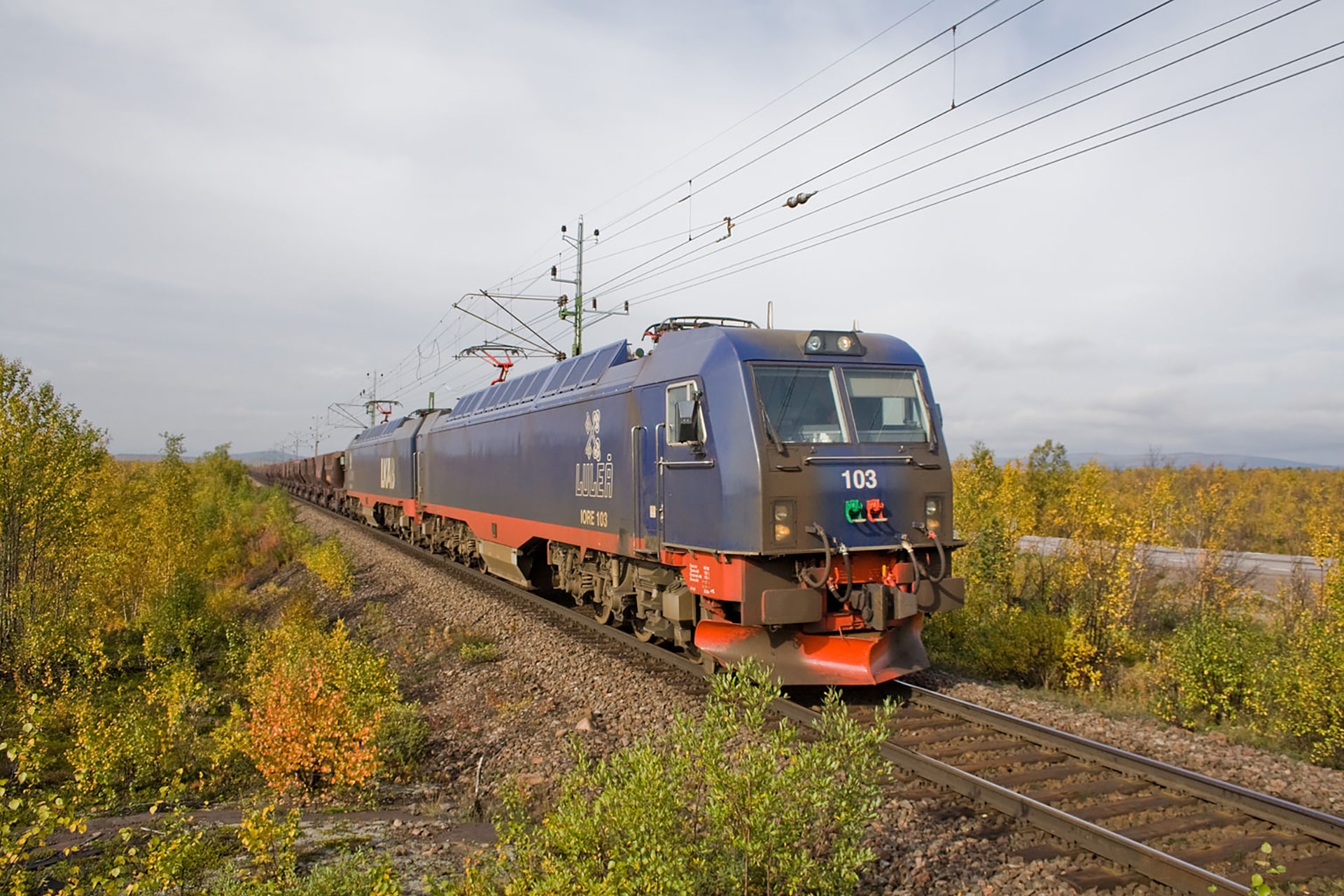
The train station platform offers a stunning view of the formidable IORE trains, known for their strength and efficiency.
David Gubler
MTAB Electric Locomotive IORE
For those fascinated by the sheer power of modern engineering, the IORE trains are an awe-inspiring sight. Known as some of the world’s most powerful freight locomotives, these giants of the rails are a vital part of Narvik’s present-day economy. Each train stretches an incredible 750 meters and carries 68 wagons loaded with up to 6,800 tonnes of iron ore. With 10-12 daily trips to the iron ore harbor, it’s hard to miss these massive machines in action. Watching an IORE train navigate its route is a breathtaking reminder of the role modern technology plays in sustaining Narvik’s legacy as a hub of iron ore transport. Here’s a Google Maps link to Narvik Train Station, the perfect spot to watch these powerful electric locomotives in town.
Train spotting tips
When you see the trains, ensure you maintain a safe distance from the tracks. Wave to the train drivers to indicate that you’ve seen the train approaching; this helps them know you are aware of its presence. For a close and safe view of the trains speeding by, visit the railway underpass near the Peace Chapel in Narvik. Additionally, Narvik’s train station is a highly recommended location, offering excellent views and easy access for watching the trains as they pass.
LKAB has entered into an agreement with ADtranz (ABB Daimler Benz) for the delivery of 9 ore train locomotives. This is part of an investment of SEK 1.1 billion in new locomotives and wagons that the LKAB board approved on June 1, 1998. The first prototype locomotive is scheduled for delivery in the autumn of 2000. The following eight locomotives are set to be delivered between 2003 and 2004.
The drag units have a total weight of 360/300 tons including/excluding ballast, resulting in an axle load of 30 tons. Thus, the weight per locomotive unit will be 180/150 tons. If the ballast is removed, the total weight becomes 300 tons with an axle load of 25 tons. Each drag unit consists of two connected six-axle locomotive sections with three-axle radially steered bogies. The locomotives are equipped with asynchronous motors controlled by water-cooled GTO thyristors (GTO = Gate Turn Off), one per bogie. Auxiliary power supply uses IGBT-type rectifiers (IGBT = Isolated Gate Bipolar Transistor).
The asynchronous motors and GTO thyristors allow for electric braking with energy recovery back to the catenary. There is also a control system that monitors slippage as well as the risk of wheel locking. For operation and maintenance assistance, there is an information and diagnostic system. The locomotives will be final assembled in Västerås.
- Total weight: 360 tons
- Speed: 80 km/h
- Voltage: 15 kV, 16 2/3 Hz
- Total length: 45800 mm
- Axle configuration: Co’C’+Co’Co’
- Wheel diameter: 1250/1150 mm
- Power: 10800 kW
- Starting tractive effort: 1200 kN
Plan your visit
Narvik’s railway heritage blends history, culture, and innovation. From the historic El-12 and Bifrost locomotives to the modern IORE trains, your visit promises an unforgettable experience and a captivating journey through time and technology.







